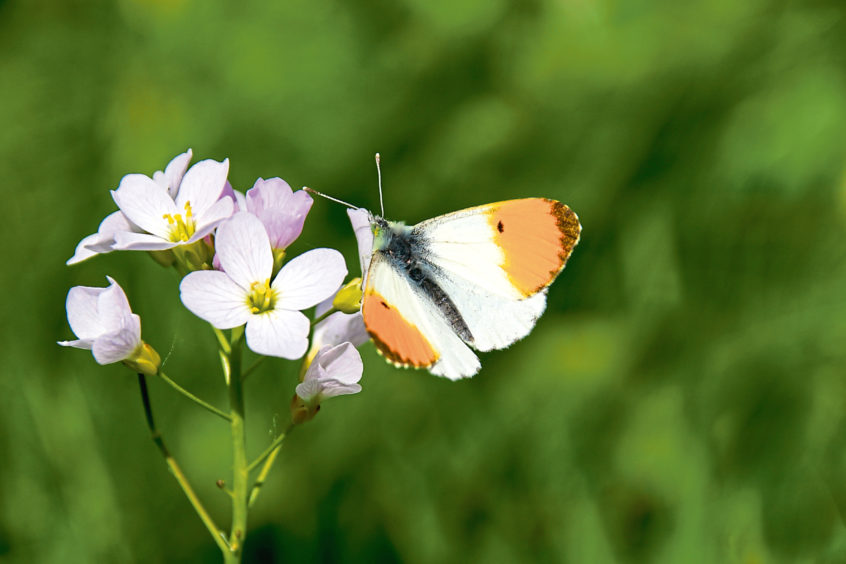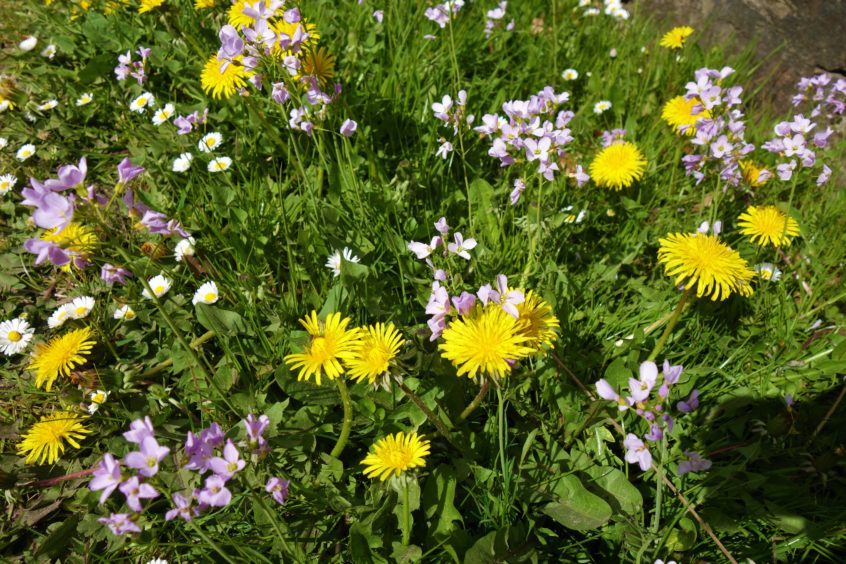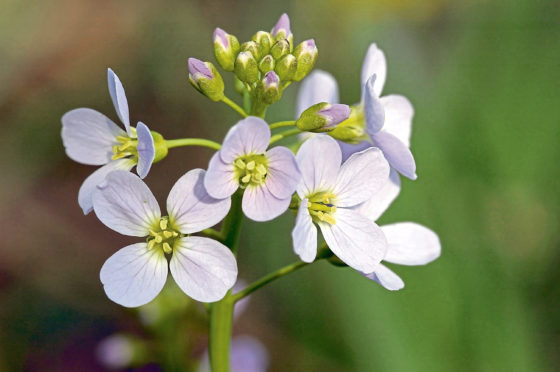Cuckooflower thrives in damp margins. It is an important food plant for the caterpillars of the orange-tip and the green-veined white butterfly.
A rippling of colour in the spring breeze: yellow dandelions, pastel-purple cuckooflowers and a sprinkling of white daisies on this trackside verge.
It was a place where bees buzzed and butterflies flitted, revealing a verdant tapestry of such focused and reflective colour that it reminded me of the rich glories of an alpine meadow.
The lockdown does deliver some benefits, for our daily exercise walks have enabled us to explore parts of our home area we have never previously visited, uncovering in the process a treasure trove of natural wealth, including this flower-speckled verge.
Wherever we venture on our walks, wildflowers have been shining out like little beacons. Cuckooflower is one of my favourites with its delicate purple petals. The colour of the flowers can vary from almost white to deep mauve, and according to John Gerard, the 16th century herbalist, the plant is so-named because it blooms “for the most part in April and May, when the cuckoo begins to sing her pleasant note without stammering”.
The plant is also sometimes known as ‘lady’s-smock’ because of the shape of the flowers, although the name may also allude to cavorting between men and women in spring-time meadows.

Dandelions, too, were abundant, their intricately frilled flower-heads little orbs of joyous sunshine. It is baffling how dandelions are regarded as weeds, despite their colour being as vibrant as any garden flower.
I hunkered down onto my knees to examine this flower-filled margin more closely, and observed little brown-furred bee-flies with their impossibly long proboscises probing the dandelions and cuckooflowers for their rich nectar.
At a time when our precious insect populations are in tumultuous decline, such patches of wildflowers are live-giving oases.
On a steep bank above the verge, wood sorrel bloomed in its characteristic under-stated way. It has a subtleness that is easy to miss, and it is always worth examining this flower closely, for what from a distance appear as white petals are in fact gently inscribed with lilac.

The following week, my daily walk took me to Dollar Glen, where I was captivated by a shimmering sea of bluebells.
The poet Gerard Manley Hopkins eloquently described the wonders of a woodland floor carpeted by bluebells as having a “blue-buzzed haze” and “wafts of intoxicant perfume”.
It was a flower that held him in such star-struck awe that on another occasion he wrote “….they came in falls of sky-colour washing the brows and slacks of the ground with vein-blue”.
I sat on a log and breathed-in the wonderful aroma of these bluebells, so exquisite in their timeless beauty. The distant yodelling of a green woodpecker echoed through the trees and the cascading call of a willow warbler drifted across the air.
The sunshine was warm, and life felt good, so I closed my eyes for a while, letting the rich scents and sounds of nature envelope my senses.










